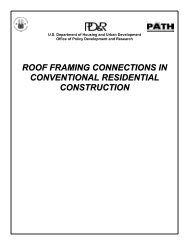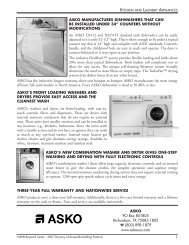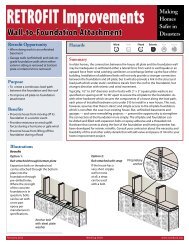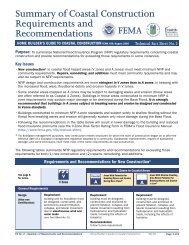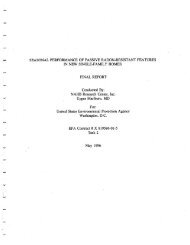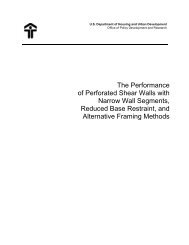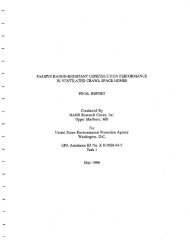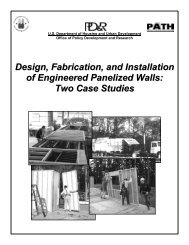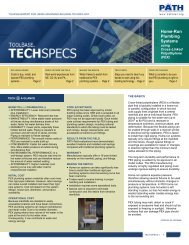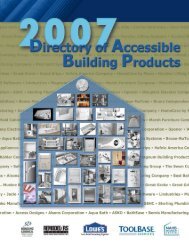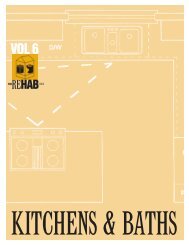The Rehab Guide, Volume 2: Exterior Walls - ToolBase Services
The Rehab Guide, Volume 2: Exterior Walls - ToolBase Services
The Rehab Guide, Volume 2: Exterior Walls - ToolBase Services
Create successful ePaper yourself
Turn your PDF publications into a flip-book with our unique Google optimized e-Paper software.
3.3REPOINT EXISTING WALLSESSENTIAL KNOWLEDGEWhile the service life of many types of brick can exceed 100 years, the longevity of mortar joints, dependingon the exposure, is closer to 25 years, according to the Brick Industries Association (BIA). At somepoint the mortar joint will fail, allowing water to enter the wall cavity. Conditions that require repointingmay include: mortar erosion more than 1 /4 inch, crumbling mortar, and hairline cracks in the mortar andbetween the mortar and brick.TECHNIQUES, MATERIALS, TOOLSREPOINT EXISTING WALL.Visual observation in combination with a light scraping with a metal tool can detect most deficiencies.Other conditions requiring repairs beyond repointing are discussed in section 3.4. Where repointing workis undertaken on houses of special architectural or historical significance, advice should be sought froma preservation specialist. Portland cement mortar was not used before the beginning of the 20th century.To avoid serious brick damage the compressive strength of the repointing mortar should be similar to orweaker than that of the original mortar. If it is not, dead loads and stresses from the expansion and contractionof the brick can transfer loads through the new mortar into the brick and can spall and crack thebrick face. Mortars used in more recent construction include types N and O (Table 1).TABLE 1MORTAR TYPES AND INGREDIENTS BY VOLUMEType Cement Hydrated Lime SandN 11 6O 12 9K 14 15ADVANTAGES: Repointing walls can stabilize deterioration, strengthen walls, and provide weathertightness.DISADVANTAGES: Costly, may require scaffolding. Requires skilled and thorough mechanics.FURTHER READING“Mortars for Brick Masonry,” BIA Technical Note #8, revised Aug. 1995.“Repointing (Tuckpointing) Brick Masonry,” BIA Engineering and Research Document #622.3.4REPAIR EXISTING MASONRY WALLSESSENTIAL KNOWLEDGE<strong>The</strong>re are certain conditions where repointing alone is not effective and replacement of a portion of a wallmay be required. Some of these include:24■ Wall cracking associated with thermal movement: Such cracks are cyclical and will open and close withthermal swings. <strong>The</strong>se cracks may gradually expand as dislodged mortar accumulates in the crack after



